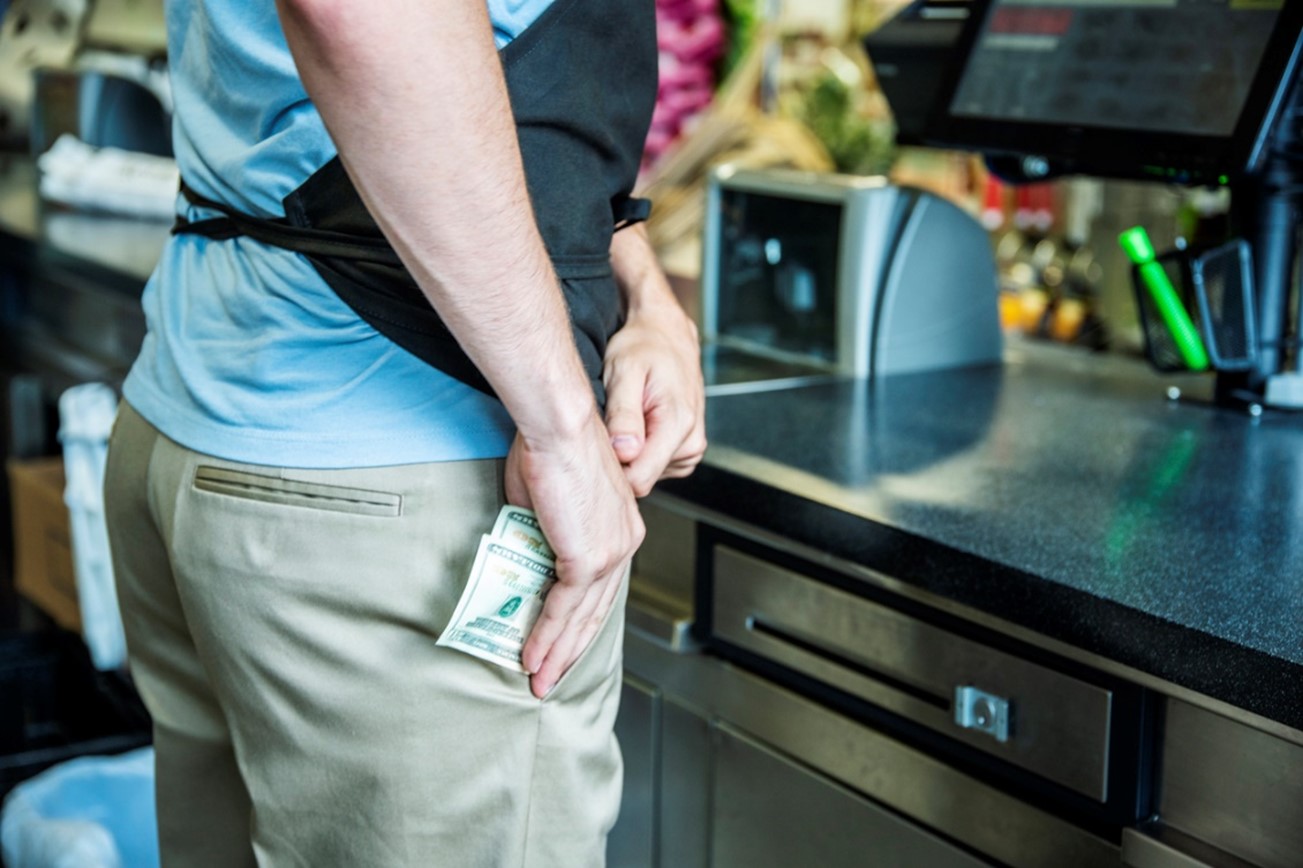
In recent years, loss prevention has become a focal point of businesses providing essential services, such as pharmacies, food, gas-and-convenience stores, clothing and hardware stores. The reality is that many merchants and retailers are faced with the same problem as a result of the increase in shoplifting (external theft) as well as theft from their employees (internal theft). One of the main reasons these crimes are increasing is the rise in inflation, which causes an increase in consumer prices, pushing more and more consumers to commit theft.
To address the widespread issue of theft, we had the privilege of speaking with Marc-André Plaisance, Director of Loss Prevention at GardaWorld. Looking back on his 12 years of experience in the field, he has highlighted certain solutions both for preventing internal theft as well as shoplifting—specifically for businesses providing essential services.
Marc-André, thank you for taking the time today to share your knowledge regarding loss prevention for businesses providing essential services. Given that theft represents a significant portion of the financial losses for these businesses, can you tell us about the main ways in which this theft occurs?
First of all, thank you for giving me the opportunity to share my experience on loss prevention. Shoplifting trends in stores are generally geared towards high-value and convenience products, such as baby formula, perfumes, razor blades, cheeses, meat, syrups, and paper towels. Furthermore, any product that is easily concealed is a favorite target for thieves.
As far as internal theft trends are concerned, they are, for the most part, theft of cash directly from the register, false refunds and item correcting or voiding legitimate sales transactions.
In summary, these two categories of theft represent a major problem for merchants, with a direct consequence on their businesses’ bottom lines. That’s why implementing a loss-prevention plan has become an important step in their fight against theft.
What are your key recommendations for addressing shoplifting in businesses that provide essential services?
Expert Tip #1:
To maximize loss prevention in retail stores, a security audit should be conducted to identify security weaknesses. This involves reviewing and implementing effective operational controls and ensuring that employees understand and adhere to established policies and procedures.
Expert Tip #2:
Store owners and managers can employ the services of floor detectives to help prevent theft. They monitor shoppers and are trained to detect shoplifting. In the event of an attempted theft, they can quickly intervene to stop it.
Mr. Plaisance emphasizes the importance of treating floor detectives as integrated members of your team, which encourages communication between them and store managers. This allows for discussions on theft trends and sensitive periods, among other things.
Expert Tip #3:
Restrict access to your establishment, whether it be fitting rooms, the warehouse, server rooms, or any other sensitive areas. It is crucial to implement access control systems or secure them with locks.
Simultaneously, maintain strict key and access card management to prevent any unauthorized entry into premises or restricted areas. It is also essential to update alarm codes when an employee leaves.
Expert Tip #4:
Providing exceptional customer service is essential. Employees who greet customers upon their arrival in the store not only help create a pleasant experience but also signal to potential wrongdoers that the staff is vigilant about their presence in the store.
Employees can also remain active on the sales floor by helping customers. This reinforces the sense of presence and can make wrongdoers uncomfortable.
Expert Tip #5:
I highly suggest that employees be offered the opportunity to receive training related to loss prevention and security. Store employees remain the first line of defense for any business. It is, therefore, essential that employees be educated in theft prevention such that they can identify suspicious behavior and adopt the right reflexes when faced with a shoplifter.
This type of training teaches employees the value of losses for a business, the importance of their role in loss prevention and security, as well as the importance of customer service. These three skills in an employee can dramatically help merchants reduce their shoplifting losses.
In terms of internal theft (i.e. theft by employees), what can be done to prevent it?
Internal theft can range from stealing small amounts of money directly from the cash register to making false refunds, to canceling legitimate sales transactions. Dishonest employees will usually wait to see if they are questioned before repeating their actions. If they are not suspected of theft, they will repeat these thefts routinely. These malicious acts put businesses at risk. That’s why merchants today need to be extra vigilant to safeguard their businesses.
To protect their businesses from criminal theft, merchants can do background checks on candidates they’re considering, before hiring them as employees. This will flag a candidate whose profile may be suspicious, potentially indicating malicious intent.
Other notable solutions to prevent internal theft include an operational control audit. The goal of the audit is to analyze operational processes to detect potential flaws that might be exploited by an employee for the purpose of internal theft. The audit report will present recommendations for ways to correct and prevent theft by an employee.
To limit the internal theft of merchandise, retailers should implement a “bag check policy” and hire loss prevention officers to perform unannounced visits at closing. At store closing, these officers check the purchases that have been made by employees and the contents of their bags. This approach allows for better vigilance and decreases internal theft.
Additionally, providing training and raising awareness among employees about the impact of internal theft, both on the company's sustainability and the future of the employees, is crucial. It's important to educate them on how to spot these criminal acts and, in case of doubt, guide them towards an anonymous reporting line such as the prevention hotline.
The last solution I would like to share with our readers is the use of security audit inspections. These audits proactively prevent losses by closely monitoring merchandise, inventory, the balance of the safe and the deposits made.
In conclusion, the use of loss-prevention services is essential to maintain security and control of your business’s activity. The tools and solutions covered above have been proven to be highly effective in the fight against internal and external theft.
Marc-André, thank you for sharing your expertise on loss prevention for businesses providing essential services. We hope that this article will help merchants use best practices to reduce (or ideally prevent) losses in their business.
I'm glad I could contribute to this discussion. Our loss prevention team is ready to advise and support merchants in battling internal and external theft.
Contact our loss prevention experts for additional information on the solutions that are right for your business.










